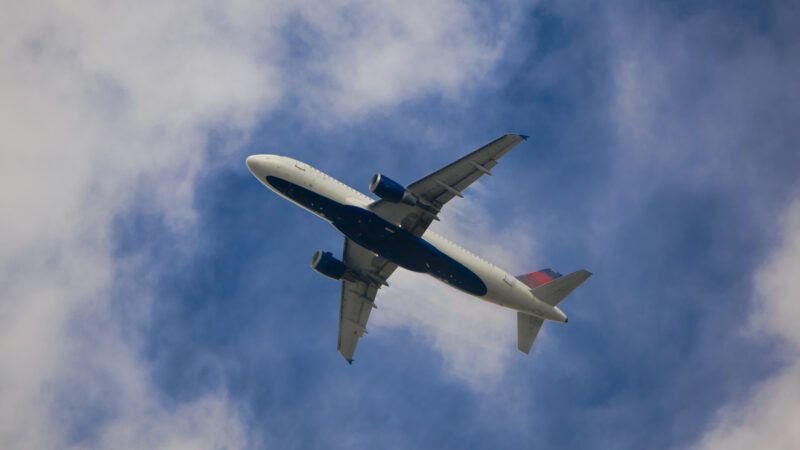Federal Aviation Administration
How Political Meddling in New York and New Jersey Causes Airline Delays in the Entire U.S.
Congestion and slowdowns in the airspace around New York City account for up to 75 percent of all airline delays, yet efforts to depoliticize its management remain stalled.

Last year, airspace congestion in the New York/New Jersey metro area got so bad that the Federal Aviation Administration (FAA) imposed flight reductions on the airlines serving LaGuardia, John F. Kennedy, and Newark Liberty airports. Travelers had fewer choices, and still experienced delays in arrivals and departures.
Due to the ripple effects of congestion in the N.Y./N.J. area on other U.S. airports, the FAA estimates that this complex airspace is responsible for up to 75 percent of all U.S. airline delays.
The N.Y./N.J. airspace, which manages arrivals and departures for nine airports from a single facility on Long Island known as N90, is not the only complex metro area airspace. Two decades ago, the FAA launched a program to redesign and simplify the airspace of a dozen major metro areas, including the N.Y./N.J. airspace. This "Metroplex" program concluded about a year ago, but N.Y./N.J. airspace was left out. New York members of Congress, including Sen. Chuck Schumer (D–N.Y.), fought and succeeded in keeping N.Y./N.J. airspace unreformed. They considered N90 "their" facility and opposed any changes, especially those that might relocate jobs.
A 2023 U.S. Department of Transportation inspector general report identified N90 as having the lowest percentage of fully certified controllers among comparable facilities—just 54 percent of the desired staffing level. A never-released report by the same agency in 2005 found that overtime and sick leave at N90 were off the charts, leading to very low productivity and very high costs. Since that report was never released, the airlines, Congress, and the public were unaware of how bad things were.
About a decade ago, the FAA developed a plan to address the understaffing at N90 (and perhaps regain some level of management control). The idea was to shift responsibility for approaches and departures for the five New Jersey airports to a well-staffed facility in Philadelphia. This would ease the extent of the controller shortage at N90, by reducing the air traffic they manage by about one-third.
The controllers' union branch at N90 declared war on the plan, backed by Schumer and his New York congressional allies. So it sat on the shelf for years—until a new FAA Administrator, Mike Whittaker, took office last year. Additional discussions with airlines and the national controllers' union leadership led to agreement (at last) on this sensible reform, set to take effect on July 28, 2024. On July 17, 17 controllers who'd been slated to transfer to Philadelphia refused to relocate. But 14 others volunteered, and another 10 agreed to a temporary relocation to assist in training the Philly controllers. The airlines (and I) breathed a sigh of relief. This long-standing problem was on the way to being solved, though it would take a few years to get Philly fully up to speed.
But—wouldn't you know it—on August 2, Schumer, along with Sen. Kirsten Gillibrand (D–N.Y.) and five House members from New York, sent the FAA a letter demanding the plan be rescinded. Airlines serving the three main N.Y./N.J. airports support the plan, knowing that it will take a year or two before the transition is completed and FAA flight restrictions can be lifted. A senior airline executive told Politico, "Doing nothing to fix the most chronically understaffed and also busiest airspace in the system was not an option. Long-term, this is the most effective solution."
Most Americans are unaware that this kind of political meddling is rare in most developed countries. Since 1987, more than 60 countries have depoliticized their air traffic control systems. Instead of being part of a government transportation agency funded by the legislative body, these systems have been converted into self-supporting public utilities. They charge airlines and business jets for their services and can issue revenue bonds to finance facility replacements or expansions. (In contrast, the FAA depends solely on whatever Congress appropriates each year and is not allowed to issue bonds.)
Freeing U.S. airspace from political micromanagement has been proposed many times over the past 50 years but has never come close to happening. The latest effort (between 2016 and 2018) got an air traffic corporation bill through the House Transportation and Infrastructure Committee, but it went no further. The large coalition (airlines, controllers' unions, pilots' unions, and others) that got us that far no longer exists. But someday, our anachronistic system of managing air traffic will be depoliticized as a self-supporting air traffic utility. Perhaps then it can build its way back to being the world's best, instead of just the world's largest, air traffic management system.


Show Comments (19)